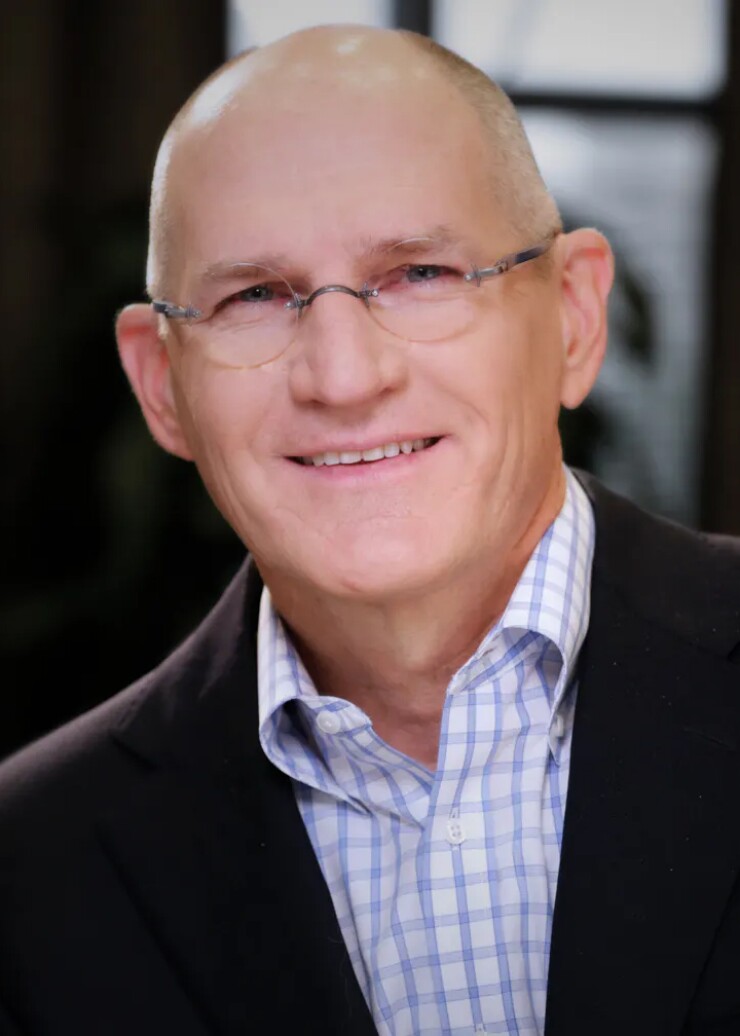Brightline West tapping TOD / P3 funding
4 min read

Brightline West is providing a road map for rail projects looking for federal funding as their planned route from Los Angeles to Las Vegas includes union labor, train sets built in the U.S. and teaming up with Uncle Sam to get the financing done.
“Governments have a superpower as it relates to expediting these projects,” said Mike Reininger, CEO of Brightline Holdings. “Governments already control corridors that connect the places that people want to go, and they’re called roads.”
The comments came during a panel discussion held at the High Speed Rail Conference in Washington D.C. on Tuesday.
Brightline
Brightline Holdings includes Brightline West and Brightline Florida, both of which are backed by Fortress Investment Group. The Florida line is 235-mile passenger rail system running from Miami to Orlando that shares the tracks with the Florida East Coast Railway, a freight carrier.
Brightline plowed $6 billion into the Florida line by upgrading signaling and crossings and now boasts trains speeds of up to 125 mph.
Brightline West is looking to replicate the success by connecting L.A. to Las Vegas and have trains running at 200 miles per hour in time for the 2028 Olympics in that city. The firm is in the process of assembling the capital stack needed.
“It’s a $12 billion capital program,” said Reininger. “It is a public-private partnership as we were the beneficiaries of a grant from the federal government of $3 billion. So, 25% or so of the project cost is going to be funded through the grant.”
“The other $9 billion is a combination of debt and equity that we’re bringing to the table to fulfill the capital requirements. Once the capital program is done, we maintain the full responsibility for the operating costs of the system forever, as we have in Florida.”
Siemens appears to have been chosen to provide the trains for the project and according to Brightline they will be built in the U.S. Track work promises to enlist union labor.
The grant was awarded through the U.S. Department of Transportation last December and landed on top of a private activity bond allocation of $1 billion for Brightline West in 2020.
The DOT has been putting a special emphasis on projects that feature
“The development activity that happens around our stations in Florida has been remarkable,” said Reininger. “We owned about eleven acres in downtown Miami, and we developed a million and a half to two million square feet of real estate in conjunction with our station there. But others developed about 10 million square feet immediately around us.”
Brightline West is currently sitting on 110 acres in Las Vegas situated between The Strip and Interstate 15. Twenty acres are set aside for the station the other 90 acres are open for development opportunities.
According to Brightline, the Florida route is already turning a profit which allowed them to
The Biden Administration has also supported the nation’s railroads with a large portion of the funds flowing through the Federal Railroad Administration.
“FRA announced more than $1.4 billion through our consolidated rail infrastructure and safety improvements grants program for 70 projects, several of which will benefit passenger rail,” said Amit Bose, FRA administrator.
Some $200 million of that is going to the troubled California High Speed Rail Authority to remove seven at-grade crossings. The authority has said it was hoping for
The Feds have also identified seven high speed rail corridors they would like to see developed including locations in the Pacific Northwest, Texas, and a line in between Atlanta and Charlotte, N.C.
Rep. Rick Larsen D- Wash., whose district benefited from a $1.1 billion DOT grant to expand a light rail line, renewed his call for a BIL reauthorization that would keep support flowing.
“I know the President wants an infrastructure decade,” he said. “We can only have an infrastructure decade if we build on the five-year bill that we just passed and do another five-year bill, as five and five equals a decade.”
Larsen doesn’t see any kind of blanket support in the House for high-speed rail and advises the industry to pursue specific goals including funding that doesn’t all come from the government.
“We need to figure out what we want to do,” he said. “Let’s focus on what we want to accomplish in high-speed rail, figure out what it will take to fund that, and how we will not necessarily be held back by how we’re going to fund things.”
Brightline’s optimism for high-speed rail extends beyond party lines. “We just had a major event in Las Vegas, the groundbreaking for the Brightline West,” said Reininger. It’s not hard to imagine why things like this are supported on both sides of the aisle because they do fundamentally good things right.”







